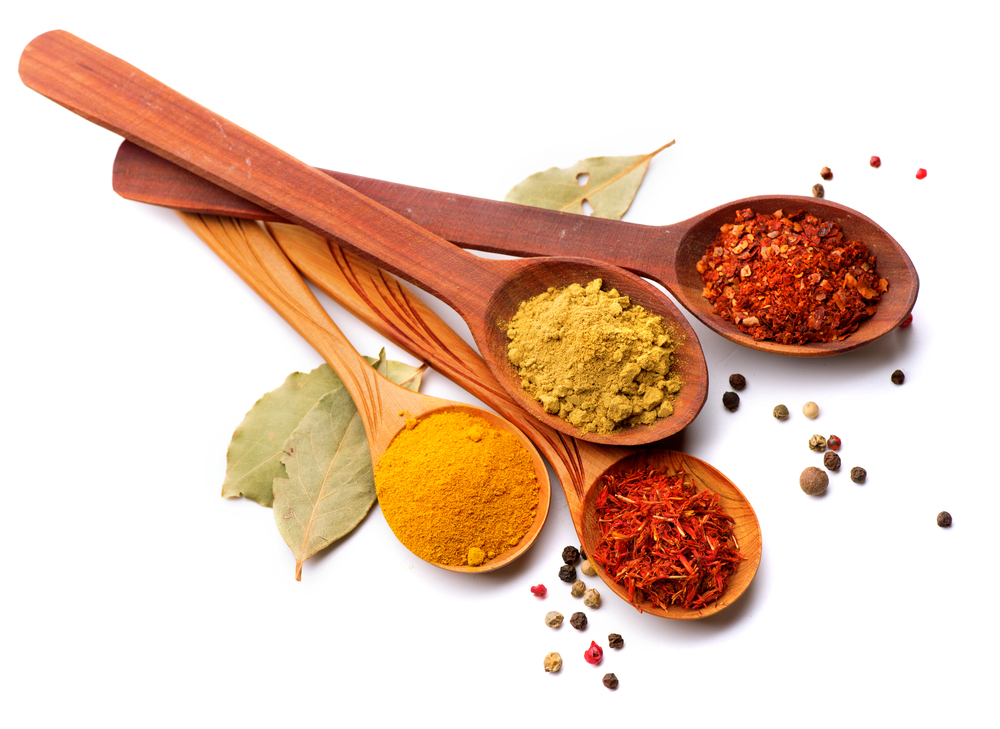Tired of feeling like your head’s stuffed with cotton while your eyes water like you’ve just finished a sad movie marathon? Seasonal allergies can turn the most beautiful spring day into a foggy mess of tissues and irritation.
Before you resign yourself to another season of drowsy antihistamines or nasal sprays, there might be a more natural approach worth trying. Herbal blends have been used for centuries to ease allergy symptoms, and modern research is starting to catch up with what traditional healers have known all along.
Let’s explore how to mix up your own powerful herbal remedies that might just let you enjoy those blooming flowers instead of cursing their existence.
Understanding the allergy cascade
Before diving into herbal solutions, it helps to understand what’s actually happening in your body during an allergy attack. When pollen, dust, or other allergens enter your system, your immune cells freak out and release histamine, triggering inflammation, mucus production, and all those lovely symptoms you dread.
Most conventional allergy medications work by blocking histamine after it’s released. Many herbs, however, work differently—some stabilize the cells to prevent histamine release in the first place, while others address the inflammation directly or support your immune system’s appropriate response.
The multi-target advantage
This multi-pronged approach gives herbal blends a unique advantage. Rather than hammering one pathway like many pharmaceuticals, herbs often contain dozens of compounds that work through various mechanisms simultaneously.
This complexity means herbal blends can address not just the symptoms but potentially the underlying imbalances that make you react so strongly to environmental triggers in the first place.
The allergy-fighting herbal all-stars
While numerous herbs show promise for allergy sufferers, a few stand out for their consistent results and safety profiles. Learning about these key players gives you the foundation for creating effective blends.
Nettle for rapid relief
Stinging nettle tops the list for many herbalists dealing with allergies, and for good reason. This common weed contains compounds that can block histamine receptors while reducing inflammatory chemicals in your body.
What makes nettle particularly valuable is how quickly it can work—many people report feeling relief within 15-20 minutes of drinking nettle tea or taking a freeze-dried nettle capsule. This rapid action makes it perfect for those moments when you feel symptoms coming on strong.
The best part? Unlike many conventional antihistamines, nettle typically doesn’t cause drowsiness, making it suitable for daytime use when you need to stay alert.
Quercetin-rich herbs for prevention
If you’re looking to prevent allergies rather than just treat them once they start, quercetin-containing herbs deserve a prominent place in your blend. This powerful flavonoid helps stabilize mast cells—the immune cells that release histamine during allergic reactions.
The elder-quercetin connection
Elder flowers and berries contain significant amounts of quercetin along with other beneficial compounds. Elder has been used traditionally for respiratory conditions and shows particular promise for allergies affecting the sinuses and upper respiratory tract.
For best results, begin taking quercetin-rich herbs like elder about two weeks before allergy season typically hits for you. This preventative approach allows the compounds to build up in your system, potentially reducing the severity of symptoms once allergens arrive.
Addressing inflammation with turmeric
The golden power of turmeric comes from its active compound curcumin, one of nature’s most potent anti-inflammatory agents. Since inflammation drives many allergy symptoms—from swollen sinuses to irritated eyes—adding turmeric to your herbal arsenal makes perfect sense.
The bioavailability boost
To get the most from turmeric, always pair it with black pepper or piperine, which increases curcumin absorption by up to 2000%. A pinch of pepper in your turmeric tea or tincture makes all the difference in effectiveness.
For allergy blends, turmeric works best as a daily preventative rather than an acute treatment. Regular consumption helps maintain lower baseline inflammation, potentially making your body less reactive when exposed to allergens.
Herbal expectorants for moving mucus
One of the most frustrating allergy symptoms is congestion—that feeling of being stuffed up with nowhere for the mucus to go. This is where herbal expectorants earn their place in any comprehensive allergy blend.
The thyme breakthrough
Thyme contains volatile oils that help loosen mucus while also providing antimicrobial benefits—useful since stagnant mucus can sometimes lead to secondary infections. Its expectorant properties help move congestion out rather than just suppressing its production.
For congestion-focused blends, combine thyme with other expectorant herbs like elecampane or hyssop. This combination helps address both the production and elimination of excess mucus, giving more complete relief than either approach alone.
Creating your custom allergy blend
Now for the fun part—putting these herbs together into effective blends tailored to your specific allergy pattern. Everyone experiences allergies differently, and the best herbal approach acknowledges these differences.
The foundation formula
Start with a base formula of equal parts nettle, elder, and peppermint. This creates a balanced blend addressing immediate histamine response, prevention, and symptom relief. From there, customize based on your dominant symptoms.
For predominantly respiratory symptoms, add thyme and marshmallow root to your base. For more eye-related symptoms, increase the elder portion and add eyebright. For skin manifestations like hives, consider adding reishi mushroom for its immune-modulating properties.
Preparation methods that maximize potency
How you prepare your herbs significantly impacts their effectiveness. Different extraction methods pull out different plant compounds, so matching the preparation to your specific herbs matters.
The infusion approach
For leafy herbs and flowers like nettle, elder flowers, and peppermint, hot water infusions work well. Place one tablespoon of your herb blend per cup of water, pour boiling water over the herbs, cover, and steep for 10-15 minutes. This extracts water-soluble compounds effectively.
For drinking throughout allergy season, make a quart at a time and keep refrigerated for up to three days. Aim for three cups daily during active allergy periods.
The immune-supporting decoction
For roots, berries, and mushrooms like turmeric, elder berries, or reishi, a decoction extracts more medicinal compounds. Add these tougher plant parts to cold water, bring to a gentle simmer, and maintain that simmer for 20-30 minutes with the pot covered.
This slower cooking process releases deeper compounds that simple infusions might miss. For a complete approach, you can make separate infusions and decoctions, then combine them for a full-spectrum remedy.
Timing your herbal approach
Timing matters tremendously with herbal allergy remedies. Unlike pharmaceuticals that work primarily by blocking symptoms after they start, herbs often work best as preventatives or early interventions.
The pre-season protocol
Begin your herbal regimen about two weeks before your typical allergy season starts. Focus on immune-modulating and mast cell-stabilizing herbs during this phase—reishi, nettle, and quercetin-rich options like elder or buckwheat tea work well here.
This early start gives these slower-acting but powerful herbs time to influence your immune response before you’re in the midst of symptom chaos.
The acute intervention
When you feel symptoms starting or know you’ll be exposed to high allergen levels, switch to more frequent dosing of fast-acting herbs. Nettle tincture or strong tea every few hours can significantly blunt an emerging reaction.
Keep a small bottle of combination tincture in your bag during allergy season for these situations. The alcohol extraction works quickly, and the portable format ensures you’re never caught unprepared.
Beyond tea
While herbal teas are accessible and effective, don’t limit yourself to drinking your remedies. Multiple delivery methods can address different aspects of allergy symptoms.
The steam approach
For immediate relief of nasal and sinus congestion, herbal steams deliver compounds directly to irritated tissues. Place a handful of your blend (thyme, eucalyptus, and peppermint work particularly well) in a large bowl, pour boiling water over them, and lean over the bowl with a towel draped over your head to capture the steam.
Breathe deeply for 5-10 minutes, allowing the volatile oils to penetrate sinuses and airways. This direct application often provides relief when oral methods haven’t kicked in yet.
The nasal irrigation enhancement
If you already use a neti pot or saline rinse, consider adding a few drops of properly prepared herbal infusion to your solution. Goldenseal, calendula, or plantain infusions in particular can soothe irritated nasal passages when used this way.
Always use herbs specifically prepared for this purpose, properly diluted, and with appropriate guidance—the nasal tissues are delicate and deserve special care.
Lifestyle synergizers
Herbs work best when supported by complementary lifestyle approaches. These synergistic practices can dramatically enhance the effectiveness of your herbal allergy strategy.
The local honey connection
While technically not an herb, local raw honey deserves mention in any natural allergy approach. Consuming small amounts of local honey throughout the year may help desensitize your system to local pollens.
For an extra boost, look for honey infused with additional anti-allergy herbs like elder flowers or roses. This combines the potential desensitization benefits with direct herbal action.
The gut-allergy link
Emerging research suggests that gut health profoundly impacts allergy responses. Including gut-supporting herbs like marshmallow root, calendula, or chamomile in your daily routine may indirectly improve allergy symptoms by enhancing gut barrier function and modulating immune responses.
This long-term approach addresses one of the root causes of allergic hypersensitivity rather than just managing symptoms.
The beauty of herbal approaches to allergies lies in their customizability and holistic nature. Rather than just suppressing symptoms, these plant allies work with your body’s own mechanisms to create more balanced responses to environmental triggers. With some experimentation and attention to your unique pattern, you might just find yourself enjoying spring walks again instead of hiding inside with the air purifier blasting.















